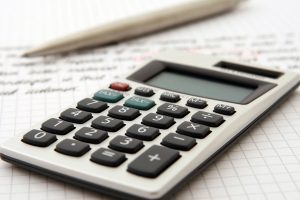Owning and letting out a Holiday Home is more popular now than ever. Not only does it avoid some of the issues with the cooling Buy to Let market, it provides both an income and a place to ‘get away’ for a few weeks every year.
Properly managed, a Holiday Let can be an appreciating asset which runs at a profit. However, the tax rules for furnished holiday letting can take a few owners by surprise.

The government’s guidance be found here: HS253 Furnished Holiday Lettings (2018) Guidance, but we’ll talk about some of the most important parts directly. We’ll explain what you should really know about the UK’s Furnished Holiday Let tax, and help you spot the ‘gotchas’ before they… well… get you.
What special tax rules apply to Furnished Holiday Lettings?
If a property you let counts as an FHL (see below), you can:
- Claim Capital gains tax relief. Options include relief for loans to traders, relief for gifts of business assets, entrepreneurs’ relief and business asset rollover relief
- Capital allowances for ‘plant and machinery’ for fixtures, equipment and furniture
- Count the profits you make as earnings for the purposes of pensions
What counts as a Furnished Holiday Let under the law?
FHLs (Furnished Holiday Lets) are very specifically described. They are a subcategory of rental properties which must be:
Located in either the UK or the EEA (European Economic Area)
Note that the EEA is not the same as the EU – it includes Norway, Iceland and Lichtenstein.
Furnished
In this case, that means it must come with enough furniture to allow normal occupation. Your renters must be allowed to use all of this furniture, as well.
Commercially let
The property has to be let with the intention of making a profit. Note, though, that letting the property ‘just to cover costs’ has still been ruled to be commercial letting.
Next, the property must meet 3 occupancy conditions to be considered an FHL. These are:
Pattern of occupation
In the tax year in question, lettings a single person for more than 31 days in a row cannot add up to 155 days or more. This is to weed out properties whose occupancy pattern is more like a traditional rental property.
Availability
The property must have been available to let for no less than 210 days within the tax year in question. Days when you are staying in the property or the property is otherwise unrentable do not count towards these 210 days.
Letting
The property mut be let commercially for no less than 105 days of the tax year in question. You cannot count longer term lettings (31 days plus) except in a few unusual conditions, nor can you count letting the property to family or friends at reduced rates or for free.
If you cannot meet the ‘Letting’ condition, there are 2 ways to have the property considered and FHL anyway. These include:
The Averaging Election
If you own several FHLs, you can average all of the FHLs you operate. If on average all of your properties let commercially let for 105 days or more, all of them meet the letting condition.
The Period of Grace Election
If you can show that you intended to meet the letting condition but failed to do so, it can be treated as having met the condition. This might require proof that you have spent as much money and effort marketing the property this year as you did in previous years when it did meet the condition. However, if the property fails to meet the letting condition for 3 years running, it cannot be considered an FHL on year 4 or onwards, until it actually does meet the condition.
Note, you can use both the Averaging and Period of Grace elections to qualify a group of properties as FHLs.
Can I deduct my insurance, loan interest and other expenses for the entire year, even if the property is closed for the off-season?
If the property is closed for part of the year – and you do not live in the property – you can deduct such expenses for the entire year.
Can I deduct those expenses if I do live in the property?
If you use the property for part of the year or if you only rent a part of the property, you can only claim the portion of the expenses that represents the commercial letting use.
When does a property stop being an FHL?
A property is not treated as an FHL for tax purposes if it fails to meet the requirements outlined above, if it is sold, or if it is used for private occupation. Note that this could affect your capital gains Tax and capital Gains Tax Relief.
If my FHL runs at a loss, can I apply that loss to offset profits in later years?
If your FHL business as a whole – not individual FHLs of you own more than one – you can set the loss against future EEA FHL profits. However, if you are a UK and EEA business, you cannot set the losses of one FHL business against profits from another.
Do you still have questions?
Just contact is at 03330 169 003. We’ll gladly do our best to answer them, and to discuss your holiday let mortgage situation as well.
